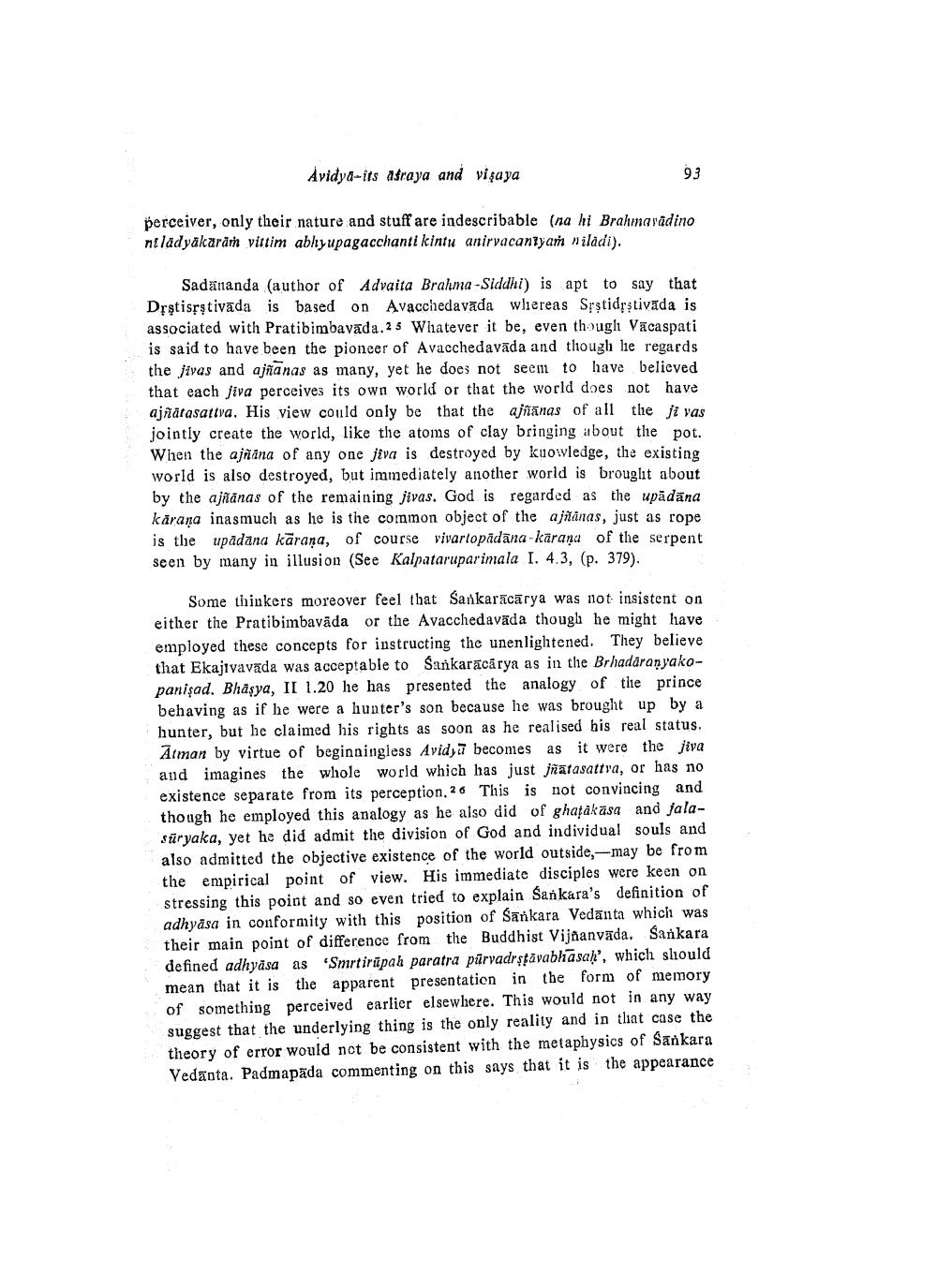________________
Àvidya-its asraya and vişaya
perceiver, only their nature and stuff are indescribable (na hi Brahmavadino nilad yakarām vittim abhy upagacchanti kintu anirvacanzyan niladi).
Sadananda (author of Advaita Brahma-Siddhi) is apt to say that Dịştisrștivada is based on Avacchedavada wiereas Srstidystivada is associated with Pratibimbavada.25 Whatever it be, even thoughi Vacaspati is said to have been the pioneer of Avacchedavāda and though lie regards the jivas and ajñanas as many, yet he does not seem to have believed that each jiva perceives its own world or that the world does not have ajnatasattva. His view could only be that the ajñanas of all the jt vas jointly create the world, like the atoms of clay bringing about the pot. When the ajñana of any one jiva is destroyed by kuowledge, the existing world is also destroyed, but immediately another world is brouglit about by the ajnanas of the remaining jivas. God is regarded as the upädäna kārana inasmuch as he is the cominon object of the astanas, just as rope is the upadana karana, of course vivarlopädāna-karana of the serpent seen by many in illusion (See Kalpataruparimala I. 4.3, (p. 379).
Some thinkers moreover feel that Sankarācārya was not insistent on either the Pratibimbavāda or the Avacchedavāda though he might have employed these concepts for instructing the unenlightened. They believe that Ekajıvavada was acceptable to Sankarācārya as in the Brhadaranyakopanişad, Bhasya, II 1.20 he has presented the analogy of the prince behaving as if he were a hunter's son because he was brought up by a hunter, but he claimed his rights as soon as he realised his real status. Atman by virtue of beginningless Avidū becomes as it were the jiva and imagines the whole world which has just jñatasattva, or has no existence separate from its perception.26 This is not convincing and though he employed this analogy as he also did of ghațäkäsa and jalasüryaka, yet he did admit the division of God and individual souls and also admitted the objective existence of the world outside, -may be from the empirical point of view. His immediate disciples were keen on stressing this point and so even tried to explain Sankara's definition of adhyāsa in conformity with this position of Sankara Vedanta which was their main point of difference from the Buddhist Vijñanvāda. Sankara defined adhyāsa as "Smrtirūpah paratra pūrvadrşavabhasaħ', which sliould mean that it is the apparent presentation in the form of memory of something perceived earlier elsewhere. This would not in any way suggest that the underlying thing is the only reality and in that case the theory of error would not be consistent with the metaphysics of Sankara Vedanta. Padmapada commenting on this says that it is the appearance




